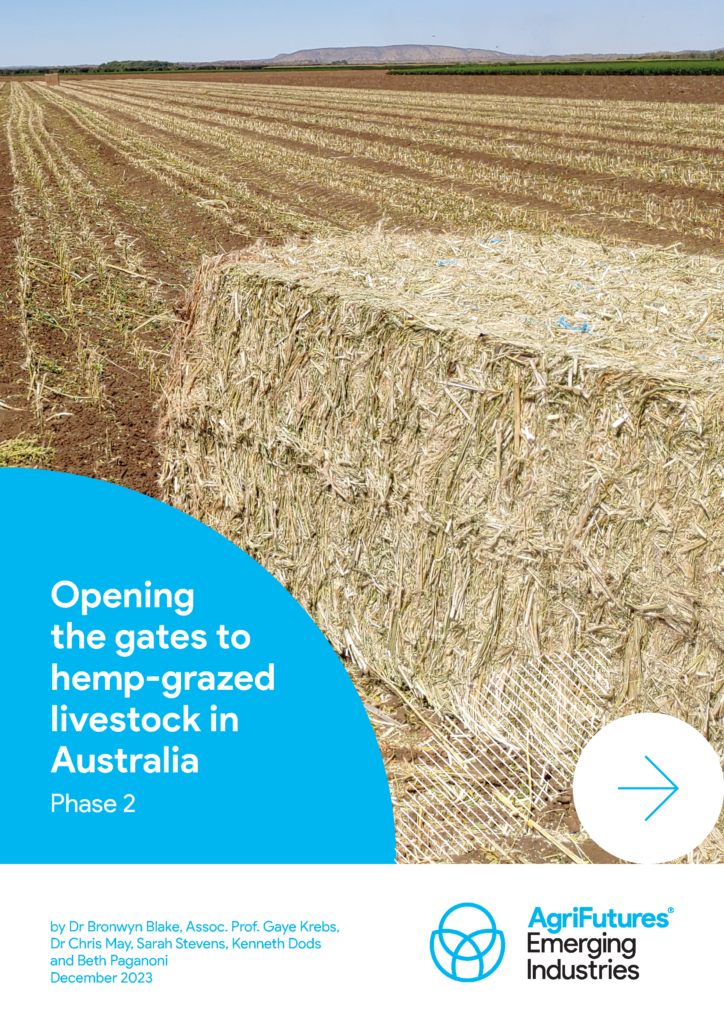Impact case study: Hazelnut investments give confidence to new growers
Australia’s peak hazelnut industry body says the number of growers in Australia is steadily increasing, as ongoing research and development efforts give potential new entrants...

81 pages
Published: 10 Sep 2024
Author(s): Bronwyn Blake, Gaye Krebs, Chris May, Sarah Stevens, Kenneth Dods, Beth Paganoni
ISBN: 978-1-76053-518-6
Download report PDF
DownloadPurchase a hard copy - AUD $50
Industrial hemp (Cannabis sativa L.), defined as low-tetrahydrocannabinol (THC) hemp, has a range of applications, including building materials, textiles, paper, fuel, cosmetics and stockfeed. Limited research has been conducted on the utilisation of industrial hemp biomass (including the stalk, leaf and flower) as a dietary component for ruminant livestock.
The considerable biomass output of this crop is a noteworthy asset. A promising development within this sector is the potential use of hemp as a summer crop, presenting a new option for summer grazing and rotational cropping for livestock producers in hemp-growing regions of Australia. However, to fully realise this potential, comprehensive data is needed to inform national regulators in establishing maximum residue limits for cannabinoids in meat products.
Under Australian regulations, THC cannot be present in animal products unless Food Standards Australia and New Zealand (FSANZ) has established a safe allowable level (a ‘maximum level’), and the residue does not exceed this threshold. To date, FSANZ has not set a maximum level for THC in animal products, largely due to a paucity of relevant data.
A pivotal aspect of the Australian Industrial Hemp Strategic RD&E Plan (2022-2027) is the collection of industry-specific data to facilitate the development of more precise policies, industry initiatives and communications. Delivery against the plan will assist in providing the industry with the community support, regulatory freedom and information necessary to realise the industry’s full potential.
As part of these efforts, Phase 2 of the Opening the gates to hemp-grazed livestock in Australia project has investigated the nutritional value and cannabinoid pathways in sheep fed hemp at its flowering stage. The project was designed to evaluate the nutritional benefits of hemp foliage as a green feed for ruminants during summer and to study the metabolism, storage, excretion and remobilisation of cannabinoids (THC and cannabidiol) in sheep.
While this study suggests that hemp forage as a finishing diet is unlikely to be practical for sheep destined for the meat market, there is scope for its use in other animal groups, such as breeding ewes, growing animals or animals that are not, or do not produce, food products, such as sheep grown for wool production.
The findings from the project will pointedly contribute to the development of an industry code of practice for feeding industrial hemp forage to ruminants, and will inform a future FSANZ application for setting a maximum THC level in meat.